8 Essential Asian Spices to Have on Hand
Are these essentials on your spice rack?
The brilliance of Asian cooking lies in its intense aromas and bold flavours.
At the heart of Asian cooking are the herbs and spices that pack flavour and bring depth to your dishes. Here is our list of 8 essential Asian herbs and spices to help breathe new life into your restaurant menu.
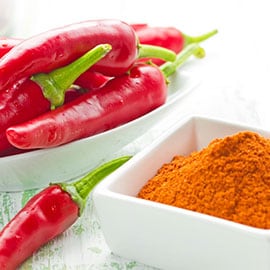
Chilli
A staple in Asian cooking, the possibilities are endless when cooking with chilli. Both green and red chillies are sold in markets, and they can be found either whole or grounded. To incorporate them into your dishes, you may consider tossing chilli flakes with vegetables, using citrus and chilli-infused oils to toss your salads, or even blending them with stir-fried Asian greens.
Popular chilli-infused dishes include Japanese Prawns in Ebi Chilli Sauce, Singapore’s Chilli Crab and Thailand’s Sweet Chilli Chicken. For Hunan and Sichuan cuisine, dried chilli peppers are excellent, but for Korean cuisine, the powdered and flaked versions are best.
For more of these delicious chilli-infused recipes, here’s how you can spice up your menu with chilli.
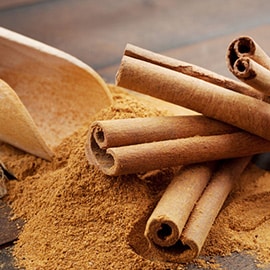
Cinnamon
Another common spice, cinnamon is found in both sweet and savoury Asian dishes given its distinctive fragrance and flavour. There are many varieties of cinnamon available:
- Ceylon cinnamon is slightly more expensive than other varieties but has a more delicate flavour. Try adding Ceylon cinnamon to Mexican dishes!
- The Chinese cinnamon gives a slightly bittersweet and burning-spicy taste. It is often used in braised-meat dishes, stir-fries, and stews.
- Vietnamese cinnamon is known for its spicy and sweet intensity, which is commonly used in broths for pho and other Vietnamese soups to give flavour.
- Indonesian cinnamon is most used in beef rendang because of its balanced flavour.
There are plenty of ways to use cinnamon, some include flavouring Middle Eastern lamb, or in aubergine and rice dishes.
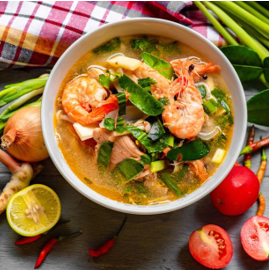
Tom yum
A staple in Thai cuisine, tom yum is known for its distinct hot and sour flavour. Made from a variety of fragrant spices and herbs, the beauty of tom yum is in the balance of the spice, sour, sweet and tangy taste. Here are some innovative uses of tom yum:
- Soup – Whip up the crowd-favourite dish, Tom Yum Soup, using Knorr Tom Yam Paste to create an authentic hearty meal for your diners!
- Marinade – Tom yum works wonders as a marinade. Slather on Knorr Tom Yam Paste to all types of meat – fish, pork, chicken and even seafood for a rich flavour and aroma
- Stir-fry – A unique twist to the all-famous tom yum soup, infuse tom yum paste into dry dishes like fried rice, stir-fried noodles, and vegetables
- Cream base – Italian meets Thai cuisine, introduce a fusion dish like Creamy Tom Yam Pasta for a creative spin
With such a versatile Asian seasoning in your kitchen, experiment with tom yum paste to reinvent new and unique dishes for your menu!
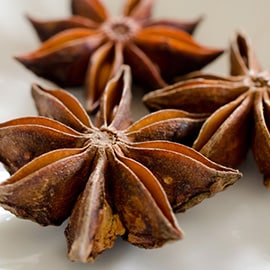
Star anise
Widely known as the star ingredient in Chinese Five Spice, star anise is a perfect complement to savoury recipes such as chicken, duck, beef, and pork dishes, giving a bittersweet aroma and taste.
Incorporate it into your menu with dishes like Fried Rice, Mango Biryani, Vegetable Korma, Honey-Glazed Pork Belly or Chinese Gingered Chicken. The slightly smoky, liquorice-like flavour of star anise may be an acquired taste, so use it sparingly to lightly flavour your dishes, so it doesn’t overpower the other flavours.
Try this delicious Pork Belly with Beetroot and Honey Raspberry Sauce and see how star anise helps enhance the flavours in a meat marinade or this delightful Herbal Bak Kut Teh recipe that shows you how star anise can work in a soup.
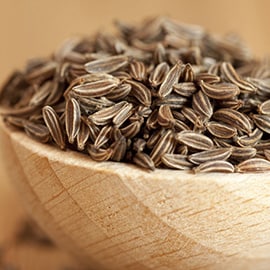
Cumin
Thanks to its distinctive aroma and flavour, cumin is the go-to ingredient when preparing rubs for meat, marinades, soups, and slow-cooked meat dishes. Here are two popular types of cumin to have in your restaurant pantry!
- Black Cumin
Black cumin is used in many North Indian curries and Middle Eastern dishes. If you are an adventurous cook, try experimenting with black cumin, which has a more complex flavour. Its seed is smaller and recognisably different from other types of cumin because of its black hue. Traditionally, it has also been used for its healing qualities, such as aiding digestion and breathing while strengthening the immune system.
- White cumin
White cumin is renowned in Mediterranean, Mexican, Middle Eastern, and Asian cuisines. It is used to enhance meats, vegetable curries, rice, and many more dishes!
So how exactly can you incorporate cumin into your dishes? Try adding cumin to eggplant, dahl dishes or even tamarind chutney! Have a go at this delicious Mutton Meatballs with Peanut Sauce recipe and see how cumin can enhance the flavours in a sauce!
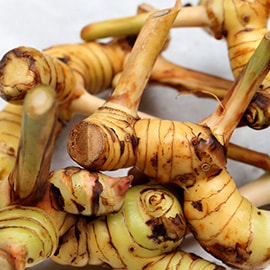
Galangal root (Thai ginger)
The galangal root is slightly bigger, smoother, and paler in colour than ginger. Known for its peppery taste, the galangal root is a staple in Thai cooking, along with the all-time favourite lemongrass. Try using them to create a refreshing lemongrass-galangal tea or the popular Tom Kha Gai, otherwise known as Thai Coconut Galangal Chicken Soup.
Want to infuse galangal root into your dishes? Try this delicious Grilled Spiced Lamb Rack with Peanut Sauce recipe or Hainanese Chicken Rice recipe to discover how galangal root can intensify the spice level of your dishes!
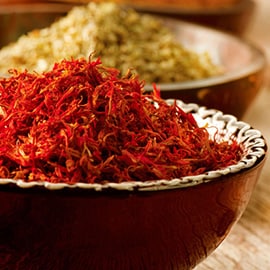
Saffron
Well-known for its distinct colour and aroma, saffron is one of the most prized spices in the world. A popular ingredient in Indian cuisine, saffron can add colour and flavour to any rice, pork, fish, or Indian biryani meal. When looking to purchase saffron, look for the ones with a brighter and more intense colour, as it signifies a stronger aroma. Experiment with this Barramundi with Saffron Tomato Broth recipe!

Turmeric
An essential ingredient in curry powders, turmeric is extremely crucial in well-loved dishes like Malaysian Rendang, satay sauces and Indian Dahl. Consider adding turmeric to your menu with dishes like Chicken Khao Soi, Tandoori Chicken, Massaman Curry or Honey-Turmeric Pork. Its distinctive colour will make your dishes look more appealing. Turmeric also has many proven health benefits, it acts as an antioxidant and has anti-inflammatory properties, among many others. Here is how you can spice up your menu with turmeric!
These are the 8 essential Asian spices and seasoning that every chef should use when cooking! Each spice offers a unique flavour - providing the perfect balance of sweet, savoury, sour and hot - that can enhance any dish.
Top recipes
Back to Flavours of Singapore
What you'll get:
- Access to free Chef trainings
- The best recipes and tips from Chefs around the world
- The latest culinary trends



